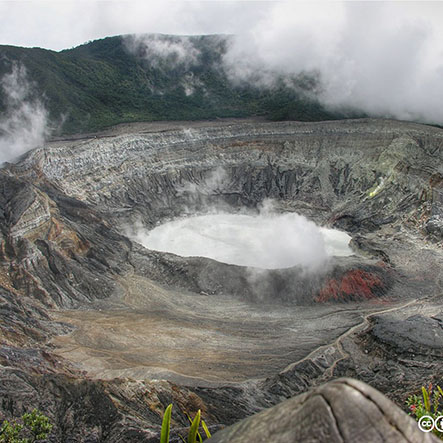Abstract
From April 12 till April 22 2017 Poás volcano experienced a new explosive phase with ballistic fragments reaching up to ~2,2 km. At its final phase non juvenile bocks predominated, product both of a 1953 lava body destruction and a lacustrine floor, followed by an increment of juvenile fragments (glassy bread crust blocks, scoriaceous bombs and, rarely, fusiform bombs). The largest ones measured up to 20 m in diameter and 1,5 m in thickness, reaching up to 200 m from the crater. The juvenile fragments showed a varied vesiculation (15%-50% vesicles) with a basaltic andesitic composition (phenocrysts of plag 20-22%, cpx 6-8%, opx 3-5%, lo 1-3%, mt 0-1%) within an intersertal matrix. The juvenile phreatomagmatic ash content increased from approximated 9% to 85% at the end, consisting of a strombolian activity. When hitting the floor, the bombs generated perpendicular cooling joints and shear stress conjugate pairs. While cooling, the joints were parallel to impact surface generating a symmetric conjugated rectangular pattern. When hitting surfaces with a slope the pattern was more complex due to viscous flow. The ballistic initial velocity was estimated in the 100-300 ms-1 range, the final velocity was estimated in the 36-120 ms-1 range, and a terminal velocity (defined in the text) in the 124-250 ms-1 range. Flight time from bottom of Main crater and the visitor area (View point) was estimated in the 8-15 secs range. At the end, a set of recommendations for future volcanic ballistic studies is included based on a totally new physics model using actual range and impact angle. It is here recommended that more shelters be built on the path between the active and Votos craters.
Comments

This work is licensed under a Creative Commons Attribution-NonCommercial-ShareAlike 3.0 Unported License.
Copyright (c) 2020 Revista Geológica de América Central






